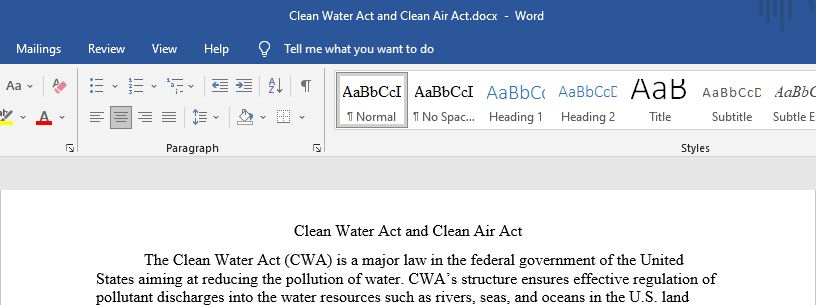Law Question-Clean Water Act and Clean Air Act
One of the goals of this class is to think about the regulatory structure of these laws, in the context of our federalist system of government and the tensions of wanting a clean and healthful environment while allowing economic activity that often results in pollution.
Notice the difference in the regulatory structure in the CWA and CAA:
The CWA starts with the federal government setting technology-based limits, industry-by-industry, pollutant-by-pollutant, on point sources. Then the states set water quality standards and seek to reduce the total pollution load (TMDL) to achieve acceptable water quality.
The CAA starts with the federal government setting health-based air quality standards, then lets the states write permits for their stationary sources of air pollution and meeting air quality standards in the way they see fit, considering cost and technology (put aside the HAP, New Source Review and cap and trade programs for a moment).
Why do you think the CWA and CAA take opposite routes to the same basic goals? Does each structure make sense, given the medium carrying pollution in each case? Is there something fundamentally different about regulating water and air to justify this difference? Or do you prefer one system over the other, and think that both should have the same structure
Requirements: Half page or so. | .doc file
Answer preview:

word limit:294
